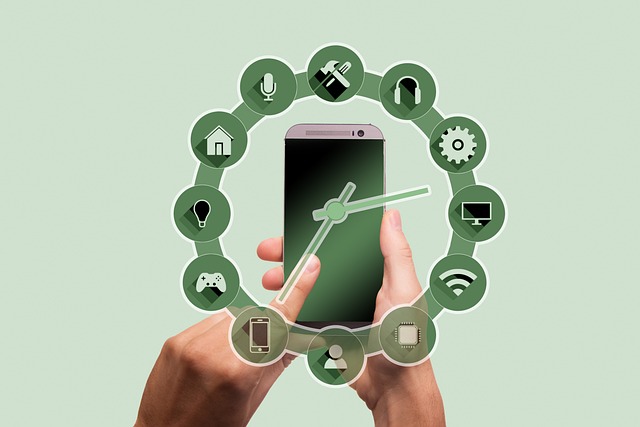
Since the onset of COVID-19 and the ensuing economic crisis, smart building technologies have become a global trend. In a post-lockdown environment, businesses are grappling with return-to-work regulations and are turning to innovative technologies in search of competitive advantages. The growing smart building market is projected to increase to $131.5 billion by 2027. So who can take advantage of these smart building technologies and — as a result — of associated custom software development? Here, we take attempt to answer these questions and delve into the benefits and challenges businesses might be faced when jumping on the bandwagon.
Innovations driving smart technologies and how they work
Smart building technologies leveraging the Internet of Things and Augmented and Virtual Reality, can be combined in software, to be disseminated on mobile apps augmented by smart analytics software. Many businesses use smart building technologies such as AI, machine learning, data analytics, and visualization to unlock illuminating building insights and value. However, they rely heavily on the ability to access the data in the first place securely and reliably.
Smart building technologies are based upon a complex architecture—data centers, data acquisition systems, connected systems, and smart edge devices. Sensors, actuators, and microchips are used in smart buildings to collect and manage data according to a business’ functions and services.
Who can invest in smart building technologies
Smart building technologies can be used for real estate businesses or parking management systems.
Similarly, smart building technologies are being used in hospital management software. IoT devices improve the monitoring of employees and patients via sensors and cameras. They can autonomously handle most infrastructure and operational challenges, such as managing thermostats to reduce heating and cooling costs. And it’s not all on the list. So what are the benefits for companies implementing smart building technologies?
Benefits of Smart Building Technologies
- Real-time monitoring and automation
Each IoT data point is a measurable component of the physical workplace. That leads to acknowledging how the workplace operates, including who uses it, how they use it, and when. Such data provides valuable insights for the company.
The opportunities for automation are increased by the connections between physical workplaces, digital management systems, motion-activated lighting, occupancy sensors on the floor, and beacons to monitor workspace usage.
- Cost reduction and energy efficiency
According to a recent report, the primary growth factors attributable to smart building technologies are reduced energy usage — with costs reduced by 10%-30%. Green initiatives are made more accessible in smart buildings because they are the result of automation responding to measurable building information. Lower energy expenses benefit organizations and the environment through sensor-controlled HVAC systems or motion-sensitive lighting.
- Better resource management
A company’s resources are quantifiable but rarely measured holistically. Space, people, and technology are taken into account by smart buildings, which quantify them in context. As a result, administrators of smart buildings are able to surface information on how individuals utilize resources and access solutions for how to increase their availability or accessibility.
Challenges of Smart Building Technologies Software
- Cybersecurity challenges
The pinnacle challenge of big data is found in smart buildings. Their entire premise is based on finding and gathering information used to enhance the workplace. However, wherever this is data, there will be cybersecurity issues. Every IoT-connected gadget is a potential point of attack. Before businesses expand these technologies and start accumulating massive amounts of data, cybersecurity should come first. Thankfully, IoT and cloud cybersecurity are both growing areas of focus. As a result, data security is becoming more straightforward, especially for businesses that prioritize sensible digital practices.
- Training and implementation challenges
Businesses need to organize a complete smart building technologies training process, which takes time and has additional costs. Facility managers, especially those with IoT skills, are more crucial than ever. Businesses must hire and train a facility manager before smart building technology can be used to its full potential.
Who will manage these smart facilities is still an issue, even if a business has the resources and the foresight to adopt them. Whose responsibility is it to set up reporting and manage integrations or recognize trends and opportunities? How can the IoT be optimized for specific corporate objectives? All these questions should be answered before the implementation process commences.
- Poor quality of software development
Smart building technologies are inherently complex, so the vendor`s expertise is crucial. To hire dedicated developers that fit such projects, detailed research should be conducted.
Such complex development requires careful cooperation among various experts and developers. Only deep industry expertise helps to navigate all business specifics effectively.
Conclusion
Smart building technologies help businesses to adapt to real-time demand and offer a variety of benefits for any industry. A smart building that effectively leverages data utilizes hardware, software, processes, workflows, and reporting systems. At the same time, companies need to be aware of the challenges that come with the advantages of smart buildings. These must be addressed, including understanding how to safely use smart building technologies, assigning someone to set up and monitor connections, and choosing reliable partners for software development.










